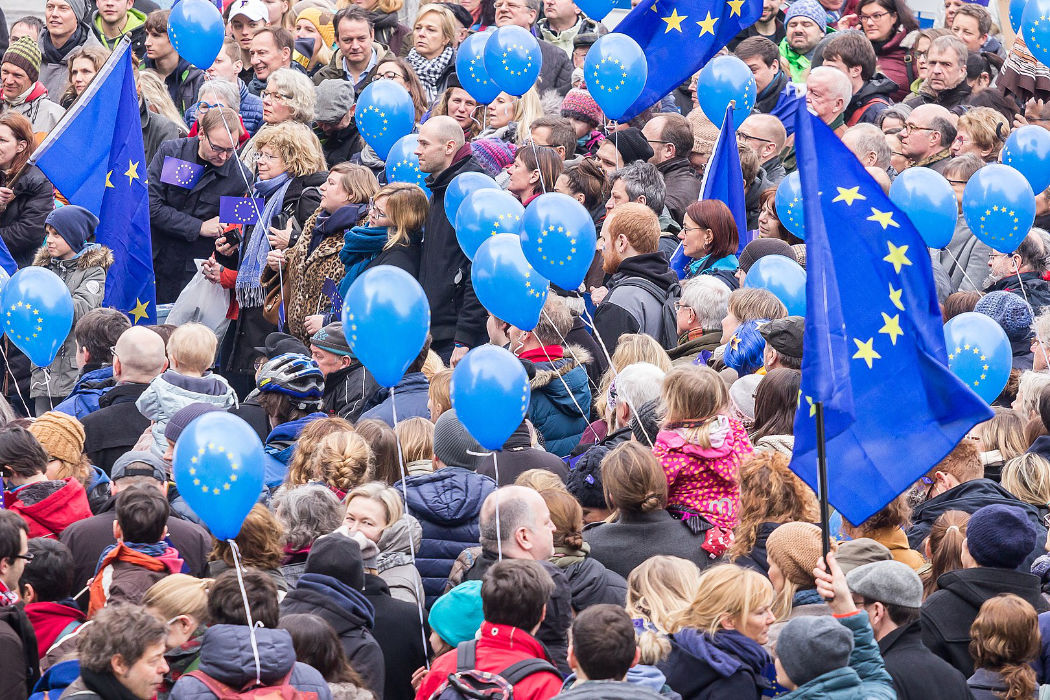The European elections have confirmed the expected surge of far-right parties. However, while many of them have seen increased results, this surge does not constitute a tidal wave. And its magnitude varies from country to country.
In total, considering all groups, far-right parties could now win around 170 seats, or 24% of the 720 seats in Parliament. In 2019, they had a total of 165 elected representatives (slightly more than one-fifth of the total), considering the 29 seats of the Brexit Party in the United Kingdom.
The largest number of far-right seats comes mainly from the French RN (30 seats), Fratelli d’Italia (24), the Polish PiS (19), the German AfD (17), and Viktor Orban’s Fidesz in Hungary. These five parties alone account for more than half of all elected far-right representatives.

Old and New Actors
The results demonstrate the consolidation of Eurosceptics and their presence in virtually all EU member states. No fewer than fifty parties can be assimilated to this political family, and to date, only Ireland and Malta remain outside the phenomenon.
In France, Italy, Poland, Hungary, Denmark, and the Netherlands in particular, the far-right scene consists of two or even three formations, such as the competition between Rassemblement National and Reconquête in France or the rivalry between Fratelli d’Italia and the League in Italy.
Alongside the established major far-right actors, such as the French RN, Austrian FPÖ, Hungarian Fidesz, Italian League, and Belgian Vlaams Belang, new groups have emerged in recent years, such as Reconquête in France, the Danish Democrats (DD), Latvia First (LPV), Chega in Portugal, and AUR in Romania.
Other movements have disappeared from the political scene, especially in Central and Eastern Europe, where party systems are traditionally more fluid.
Variable Performance
However, this new surge of the European far-right is far from uniform. On the night of June 9, these parties won in France, Italy, Hungary, and Austria. In the Netherlands, the Party for Freedom (PVV) came second behind the left-wing coalition, with 7 seats. In 2019, far-right parties dominated the polls in five countries: Italy (League), France (RN), Hungary, and Poland, as well as the United Kingdom, where the Brexit Party won 29 seats, surpassing the UKIP results five years earlier.
These parties registered their most significant vote increases in Belgium, Austria (+10 points), the Netherlands (+14 points), Bulgaria (+13 points), and Estonia. In Romania, AUR made a strong entrance, improving its result from the December 2020 legislative elections, with 14% of the votes and 5 seats.
In France, the far-right bloc RN + Reconquête alone obtained 37% of the votes cast, a historic high since 1979. In Italy, the success of Giorgia Meloni’s party largely reflects the ongoing recomposition within the right-wing bloc and the decline of Matteo Salvini’s League: in 2019, Salvini led the polls with more than 34% of the votes cast and 29 seats; in 2024, the League accumulates less than 10% of the votes.
In the Netherlands, this game of communicating vessels comes at the expense of the Forum for Democracy (FvD), which loses most of its support to 2019, undoubtedly partly in favor of the PVV.
Limited Rise of Vox in Spain
Although the far-right remains at a high level, it declines compared to 2019 in Hungary and sharply in Poland, where PiS has lost 12 points and 8 seats in five years. Back in opposition since the October 2023 legislative elections, Jarosław Kaczyński’s party suffers partly from the competition of the Confederation of Liberty and Independence, which has consolidated in the heart of the Polish right with 12% of the votes and 6 seats.
In Hungary, Viktor Orban’s party faces competition from the far-right Our Homeland Movement (MHM) and the new Respect and Freedom (Tisztelet és Szabadság) party of Péter Magyar, positioned more centrally.
In Finland, the Finns pay for their participation in the government and fall sharply (-6 points) compared to 2019. In Portugal, Chega struggles to repeat its results from the general elections last March, obtaining 9% of the votes (2 seats).
The rise of the far-right also remains limited in Spain, where Vox has gained 3 seats compared to 2019, and in Sweden, where the Democrats are more or less where they were five years ago.
Across the Rhine, the AfD has stagnated at 16% of the votes, behind the Social Democrats of the SPD, and has 17 seats, 8 more than five years ago, far from the results still promised by the polls, with an average of 22% of the votes last January. The numerous controversies surrounding the “remigration” project and the controversial statements of Maximilian Krah about the SS have clearly alienated some German voters.
The exclusion of the AfD by the Identity and Democracy (ID) group on the eve of the elections probably further marginalized Tino Chrupalla’s and Alice Weidel’s party.
The AfD also faces competition on its left flank from the newly formed Sahra Wagenknecht Alliance (BSW), attributed with 5% of the votes, on anti-immigration issues very similar to those of the AfD.
Successive Layers of Resentment
Throughout Europe, the popularity of far-right movements originates from the “polycrisis” to which European citizens have been exposed since 2008, in the form of successive layers of resentment accumulated from the financial crisis to the current war in Ukraine, through the 2015 refugee crisis and the covid-19 pandemic. A mix of issues perfectly summarized by the electoral slogan of the Austrian FPÖ in the run-up to the vote:
“Stop European chaos, the asylum crisis, climate terror, or warmongering.”
Several factors currently drive the rise of parties like the RN in France and the AfD in Germany. The economic context and rising prices continue to weigh on public opinion and, like the RN in France, fuel frustration and anger around purchasing power and the cost of living, even among the middle classes.
From a cultural perspective, the far-right continues to capitalize on cultural insecurities linked to immigration, as evidenced by the recent elections in the Netherlands.
Migration remains a key issue for extremist parties and dominated the electoral agenda of these European elections, especially in Germany, Poland, and France.
Geopolitical uncertainties around the war in Ukraine have allowed the far-right to raise their voice against European governments doing everything possible to support Kiev’s war effort, accusing them of warmongering and calling for national withdrawal, as in the case of the German AfD and the Austrian FPÖ.
Performance Still Linked to National Political Cycles
In many cases, the European far-right has been able to exploit the socioeconomic impact of the war to their advantage, skillfully focusing on national issues.
Moreover, there has been a backlash against energy transition policies and the European Green Deal.
Just like recent agricultural movements, extremist groups across Europe are now mobilizing around anger against an ecology they denounce as “punitive.”
In countries like France, Germany, Belgium, Austria, Bulgaria, and Romania, the far-right result reflects a vote of disapproval against the governments in power. As is known, European elections are generally considered second-tier elections, with fewer stakes and conducive to the expression of discontent and protest votes embodied by parties like the RN in France or the AfD across the Rhine.
In other countries, like Italy, the Netherlands, or Portugal, the European success of Fratelli d’Italia, the PVV, or Chega extends the good results of these parties in recent national elections. Giorgia Meloni was heavily involved in the European campaign, and as such, her party could benefit from the still relatively intact popularity of the Italian head of government.
Normalized Far Right
Finally, the new wave reflects the growing normalization of these parties, perfectly illustrated by Le Pen or Giorgia Meloni’s political pragmatism in Italy. On the eve of the European elections, most far-right parties, such as Geert Wilders’ PVV or the RN in France, strategically moderated their positions on Europe, abandoning the more radical themes around their plans to leave the EU or create a new Europe of free and independent nations, the old Le Penist refrain that remains at the heart of the RN’s European project and its allies.
Above all, the far-right benefits in many cases from the attitude of major traditional right-wing parties, such as the Républicains in France or the Dutch VVD liberals, who attempt to recapture far-right themes and, in doing so, lend greater legitimacy to these groups.
Alone or in coalition, far-right parties are now in power in six EU countries, from Giorgia Meloni’s Italy to Finland, Viktor Orban’s Hungary, and more recently, the Netherlands, Slovakia, and Croatia. In Sweden, Jimmie Åkesson’s Democrats support the center-right government of Ulf Kristersson without participating.
Now, the far-right could re-enter government in Austria or even Belgium, where the cordon sanitaire maintained by the New Flemish Alliance (N-VA) around Vlaams Belang seems increasingly fragile as Tom Van Grieken’s party advances.
What Are the Prospects?
Although it is still too early to analyze the voting impact, it is likely that the consolidation of the far-right in many member states will represent a significant challenge for the European Union in the coming months and years, especially on key issues such as immigration, energy transition, or support for Ukraine.
The main pro-European forces should retain the majority. However, the shift in the balance of power, the normalization of major far-right actors in Europe, and the increasing number of alliances these parties can forge with traditional right-wing parties are underlying trends that will inevitably affect the future balance of power within the new parliament and in many EU member states.
More generally, the far-right now faces the challenge of unity and their ability to rally forces that remain divided within the Parliament, between the group of European Conservatives and Reformists (ECR), led by Giorgia Meloni, and Identity and Democracy (ID), led by the French RN and its allies of the League and PVV. Not to mention the few MEPs who have deviated towards the Non-Inscrits Group, such as the Hungarian Fidesz MEPs.
This division still reflects the reality of a heterogeneous far-right family. Although many of these parties are united by their opposition to immigration, their criticism of European integration, and their rejection of the Green Deal, there are still dividing lines around Ukraine, relations with Russia, major EU economic and monetary policies, and the defense of traditional values.
Additionally, these movements have integrated differently into their respective political systems. Alongside an “integrated” far-right, such as those developing in Italy and the Netherlands, there are still movements that remain, for the time being, distanced from power by a cordon sanitaire, such as the French RN, the German AfD, or the Vlaams Belang in Flanders.
Elsewhere, the far-right is also represented by ultra-nationalist movements such as Vazrazhdane in Bulgaria, the National Movement (Ruch Narodowy) in Poland, the Our Homeland Movement (MHM) in Hungary, and the Croatian Patriotic Movement (DPMS), which are more challenging to achieve politically.
In this changing landscape of the far-right, major political maneuvers have begun, pointing to future recompositions.
Gilles Ivaldi, Chercheur en science politique, Sciences Po
This article was originally published in The Conversation. Read the original.




